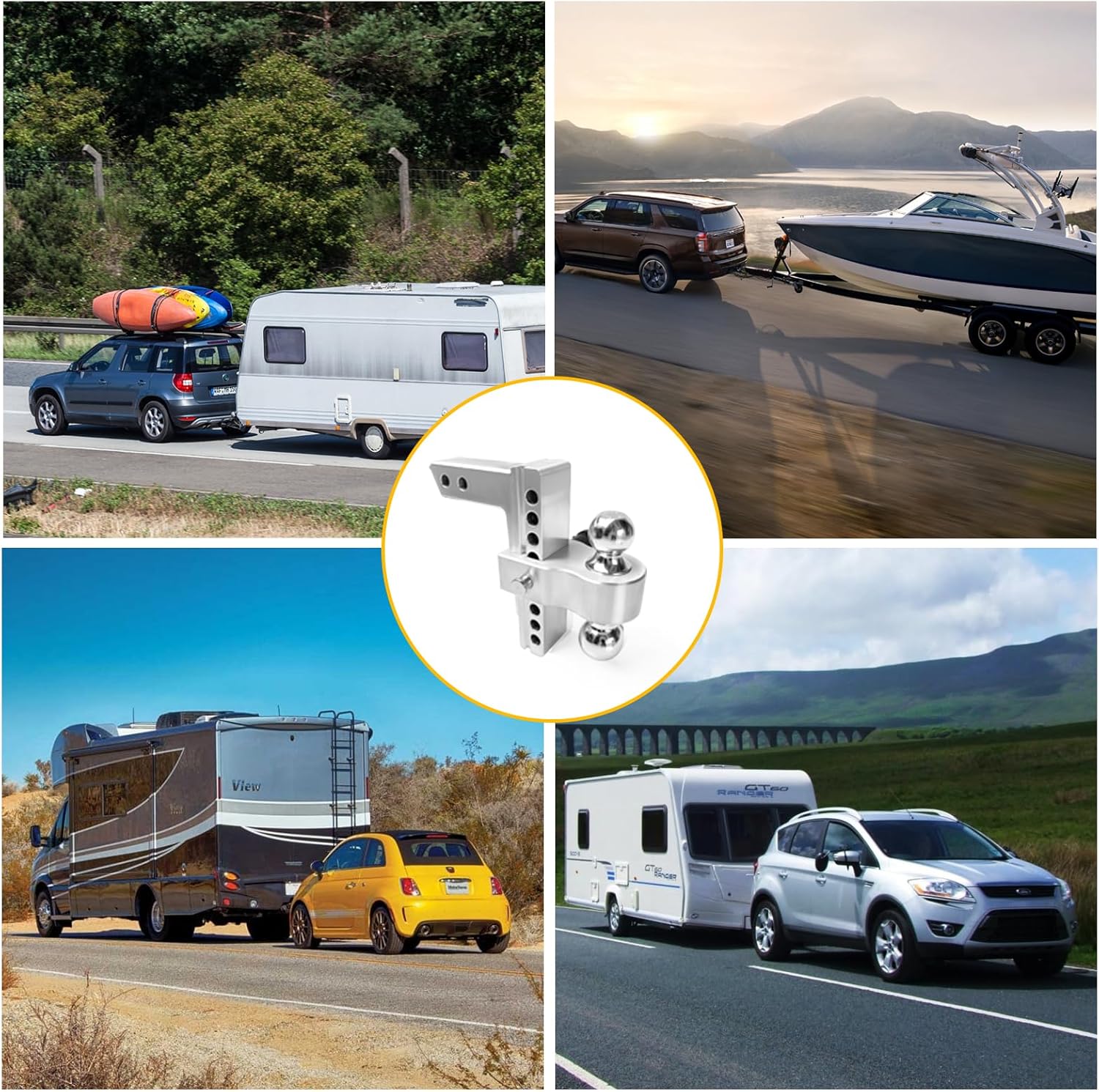Sometimes weight distribution hitches can be difficult to wrap your brain around everything that’s going on when you hook one up to your truck and trailer. This video will help give you a visual and further explain what a weight distribution hitch does for you and more specifically what our True Tow Weight Distribution Hitch offers. We’ve designed this hitch with an app on your smart phone that will calculate your exact DTW (Distributed Tongue Weight) that is required to have a truly distributed system. The DTW calculation communicates precisely how much weight the spring arms will load to in order to provide a true distribution which then gives the correct front axel load return to the vehicle and is reflected in an added amount of weight to the built-in gauge, called DTW. Check it out!

This is a good depiction of WHAT the hitch does, not HOW it works. Seriously, how the heck does it work?
At the 1:40 mark, you can see how it torques upwards on the hitch. So applying force from the back of the trailer tongue hitch up and into the truck hitch which exerts into the truck frame basically, which makes the front receive some of the weight. It's just a lever from the trailer hitch tip to back sides of the trailer hitch where they connect that pushes outwards both ways and counteracts against the ball/hitch point. The truck front springs and trailer axle springs can absorb the force(weight).
The animation, although excellent, does not show how the hitch works. It only says it works.
It should work no different than a regular distribution hitch. It simply has a gauge and a torque bolt to adjust it. The biggest problem I see is it increases the distance from the rear axle t to the ball which gives more leverage to the trailer for both weight and sway that must be compensated by the distribution - sway bars. I would love to see a redesign that puts the ball as close to the bumper as possible.
Me TOO. I have yet to see ANY video tell you HOW it works, not just what it does. BUT. I will tell you how it actually works.
What these things do is restrict the downward pivot of the ball and hitch. IF you took a 2" square tubing and welded it to the trailer and stuck it in the receiver you would have NO sag at all. Of course you wouldn't be able to turn.
If you took a long leaf hinge, opened it and placed it on two round tubes, the hinge would just collapse. And the ends of the hinge go up. But if you took a paint mixing stick and clamped it to one leaf, of the hinge and took a rubber band and strapped it to the other leaf, it would straighten that hinge right back up. The two ends, pin and knuckles will all get straightened out. The two round tubes represent the tires of the trailer and the rear tires of the truck. The ends of the hinge are the front tires of the truck and tail end of the trailer. The hinge pin and knuckles are the ball and hitch. So you can see how it actually brings that front end back down
What all these videos never say is that when you are tensioning the bars with chains or like this one with a fancy tensioner is that all you are doing is getting the right stiffness so that the ball has SOME movement up and down.
That right there is why you will never see them putting these things on utility trailers because the weight changes way too much. Boats and travel trailers don't change much. OR at least enough to makes a difference.
I hope this makes sense?
How does this type of hitch compare to an overload spring and/or airbags? How much is the moment on the frame rails near the front of the cargo box increased with this system?


